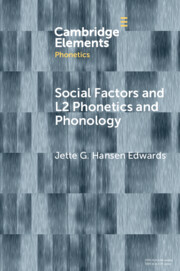Element contents
Social Factors and L2 Phonetics and Phonology
Published online by Cambridge University Press: 19 February 2024
Summary
- Type
- Element
- Information
- Series: Elements in PhoneticsOnline ISBN: 9781108943062Publisher: Cambridge University PressPrint publication: 14 March 2024
Bibliography
Primary Sources
Secondary Sources
- 1
- Cited by



